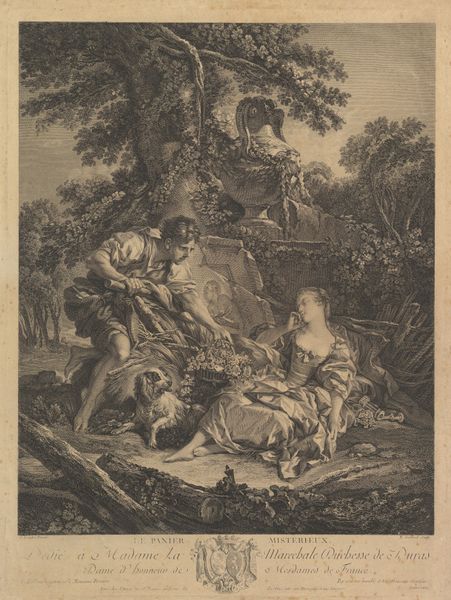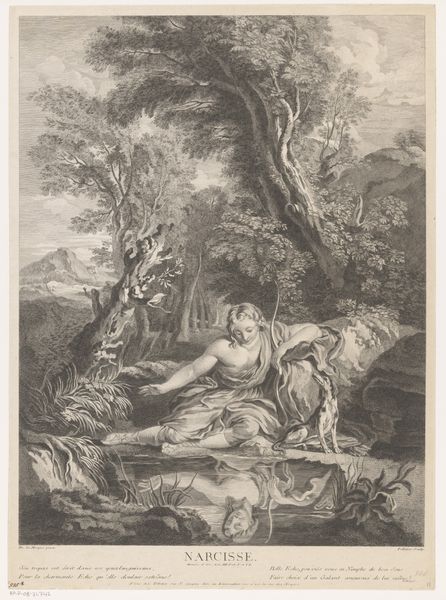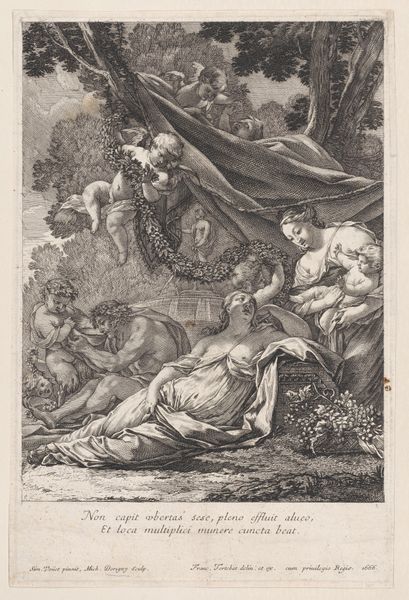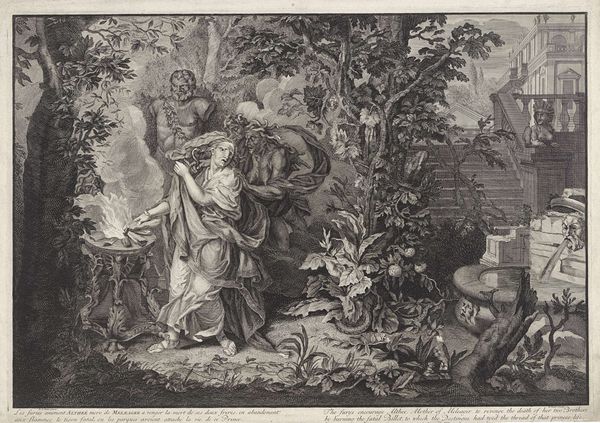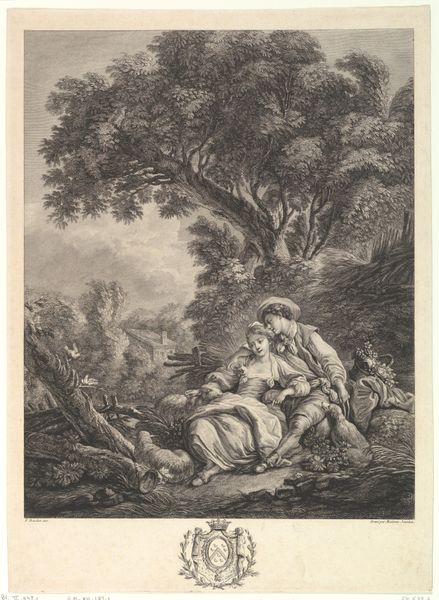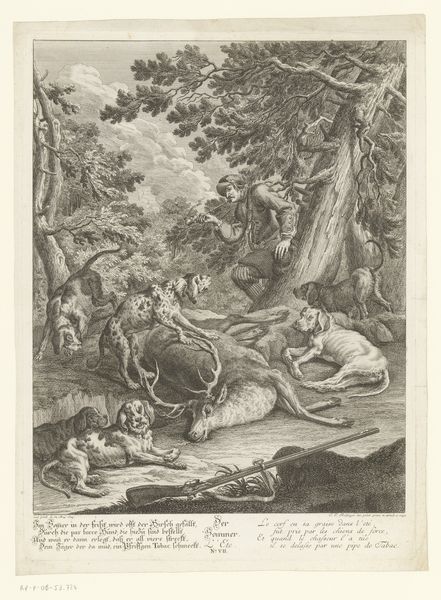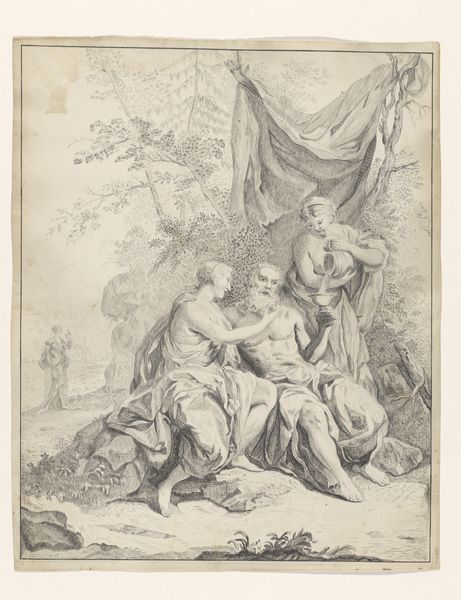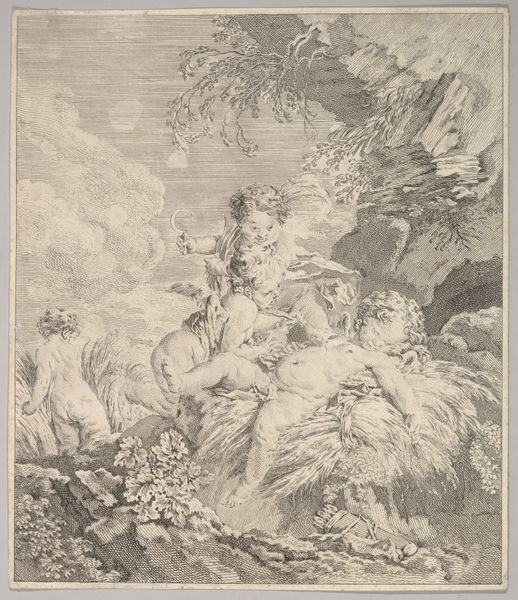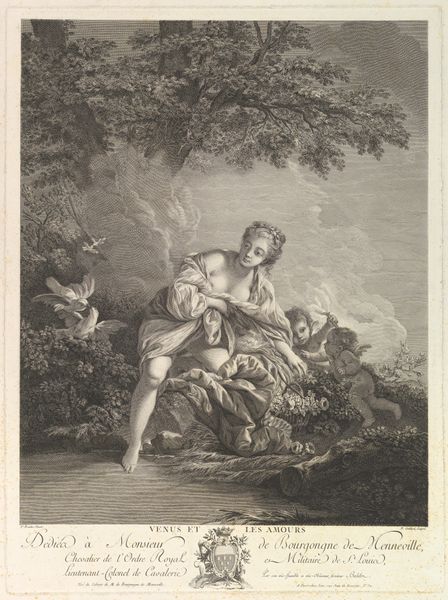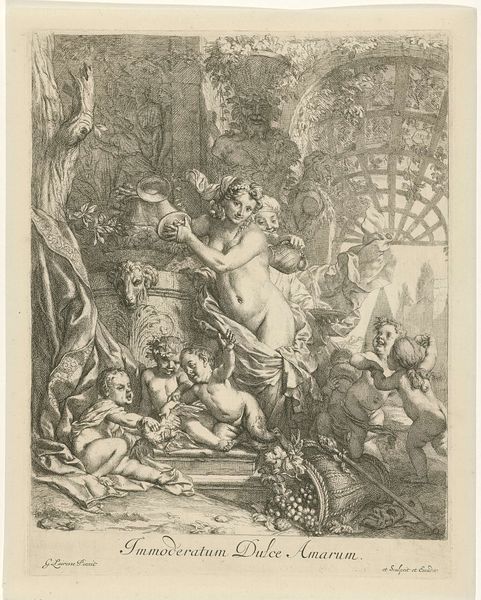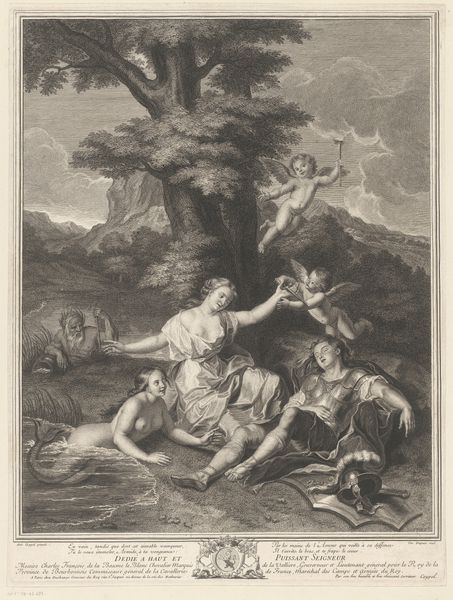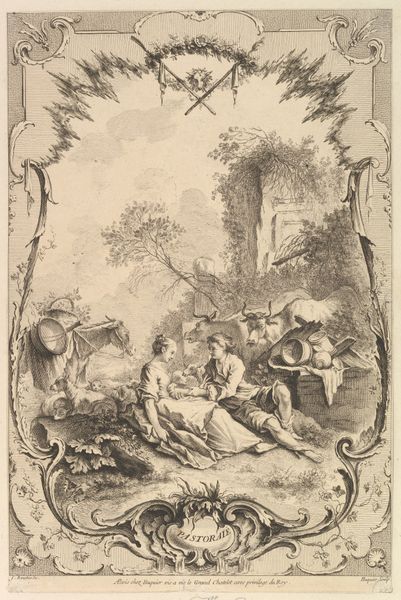
drawing, print, engraving
#
drawing
# print
#
landscape
#
figuration
#
france
#
line
#
genre-painting
#
decorative-art
#
engraving
#
rococo
Dimensions: Sheet: 18 7/8 x 14 1/16 in. (48 x 35.7 cm)
Copyright: Public Domain
Curator: This engraving, "Les deux Confidentes," likely created between 1740 and 1784, captures a pastoral scene reminiscent of Rococo sensibilities. The piece now resides at the Metropolitan Museum of Art. What's your initial reaction to it? Editor: It feels instantly intimate, almost voyeuristic. The intertwining figures, nestled amidst this idyllic landscape… I see an almost dreamlike quality in the rendering, hinting at shared secrets or a moment of profound trust. Curator: Yes, the intimacy is key. Examining the engraving through a historical lens, the "confidentes" and the leisurely setting were visual devices employed to portray elite social life, particularly within the French court. The artwork also makes reference to Madame de Pompadour, as noted in the description below the image. Editor: Ah, Madame de Pompadour! So we’re likely seeing an idealized image presented through symbols. Notice the sheep—traditional symbols of innocence and peace. Even the reclining dog, the lion statue; what statement are we meant to draw from that animal contrast in an artwork referencing such a key court figure? Curator: I’d argue it subtly reinforces the idea of benevolent authority—Pompadour as both powerful, represented by the lion, yet gentle and nurturing like the sheep. This sort of imagery shaped public perceptions and constructed narratives around prominent figures of the era. It also echoes classical idyllic landscape themes popularized at the time. Editor: Agreed. The strategic use of iconographic shorthands tells a potent story beyond the simple scene. We instinctively react to certain animal and classical images – but what was their impact on contemporaries? Does the artist intend for these elements to build on or even challenge conventions through artifice? Curator: Exactly! It shows us how art served a direct social and political function in the 18th century. Understanding those historical dynamics enriches how we read the image today. Editor: For me, seeing the symbols woven in opens doors to deeper questions of how these women saw themselves, and how they wanted to be seen, amidst the turbulence of courtly life. Curator: A good point. Viewing the visual language in the work helps in exploring broader cultural values around friendship, leisure, and status that resonate in the history of representation. Editor: It’s remarkable how a seemingly simple engraving unveils complex historical currents through such powerful and subtle iconographic choices.
Comments
No comments
Be the first to comment and join the conversation on the ultimate creative platform.
